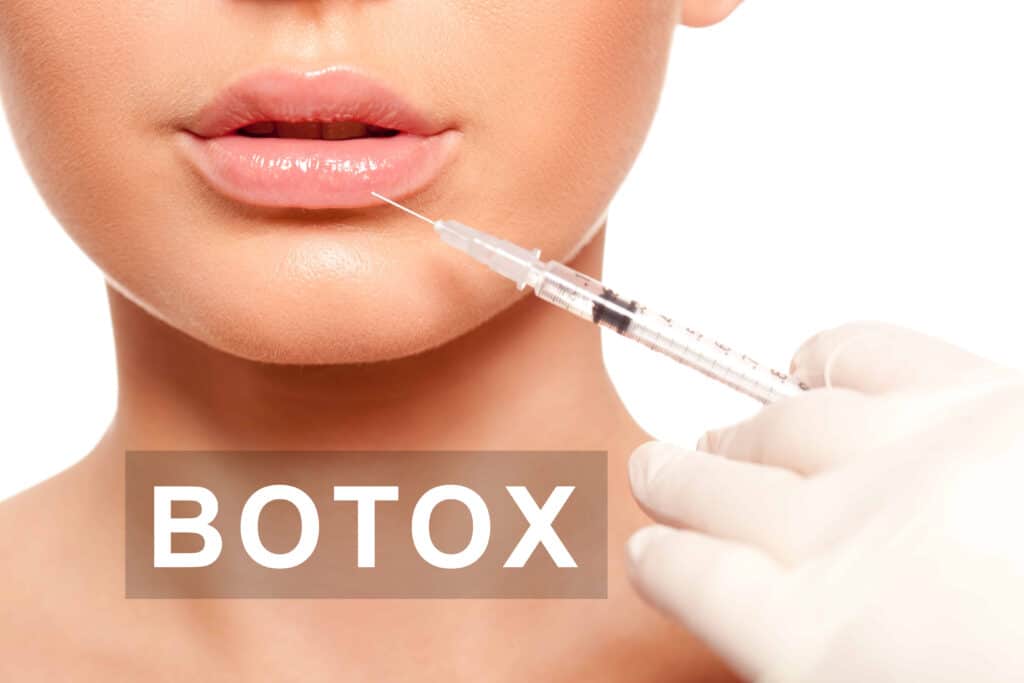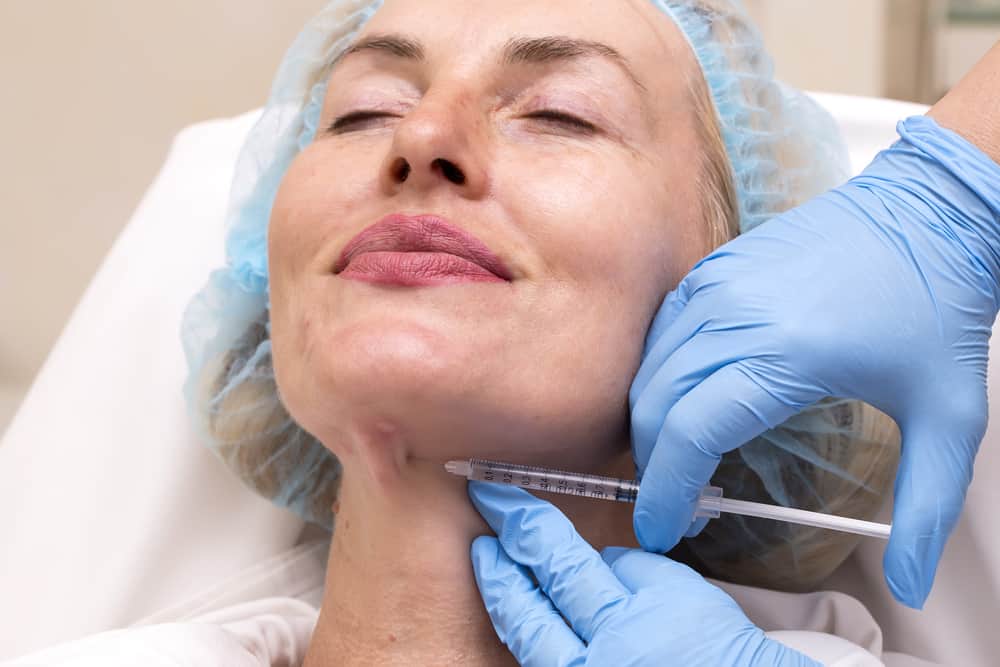
Four decades ago, Alan Scott used a form of botulism toxin to help patients who had undergone several failed surgeries for double vision. The drug was injected into the patient’s eye muscle to help cure the problem, also known as diplopia. The experiment succeeded, but additional advantages were soon discovered. Do you want to know these advantages? Stay with me.
What is Botox®?
It is a drug produced by the spore’s bacterium Clostridium botulinum. Botox® prepared from the botulin toxin. It is an FDA-approved neuromodulator that treats everything from wrinkles to excess sweating and migraines.
Where is Botox® found?
Bacteria of Clostridium Botulinum are found on the surfaces of vegetables, fruits, and intestinal tracts of some animals and fish. The toxins thrive there because the conditions are favorable, with low oxygen and low acidity levels.
WHAT ITS LIKE TO HAVE A BOTOX® TREATMENT?
Cosmetic denervation with Botox® is a simple and safe procedure. A tiny micro-needle with a minimal amount of Botox® is injected, very precisely, into several locations on the face. Because the needle is so fine and only a tiny amount of liquid is utilized, the pain associated with the injections is minimal. Most patients compare the sensation to a bug bite. No addition of anesthetic is required, and you can resume normal activities immediately. Some patients experience slight, temporary bruising at the injection site, which will resolve quickly but can be easily covered with makeup.
After the drug has been injected in a proportional amount, depending on the area treated, the chemical starts working by blocking nerve transmission in skeletal muscle and nerve endings and smooths the muscles. In addition, it prevents the nerves from communicating with the muscles, so they cannot tense up. The effects are short-term but can last for months. Results do vary depending on how your body metabolizes the product.
Uses of Botox®
Botox® injections reduce the appearance of your facial wrinkles by relaxing the muscles that cause wrinkles. It is used to address signs of aging. The injection can be administered in several parts of your face, including the forehead, eyebrows, nose, eyes, lips, chin, neck, and jawline. The injection can be used in treating strabismus or crossed eyes. Botulinum Toxin is administered in the eyes’ affected muscles to help both eyes line up in one direction. They may also result in a reduction of blurriness.
Botox® injections help in treating hyperhidrosis. The toxin blocks the sympathetic nervous system, which produces sweat. It, in return, prevents the glands from producing more sweat. The injections are used in treating lazy eyes. After administering botulinum, it weakens the eye muscles allowing the eyes to straighten up, preventing squint.
Also, it is used in treating chronic migraines. The toxin works by blocking neurotransmitters in transmitting pain to your brain.
Is Botox® for Everyone?
Botox® has no significant side effects if performed by an experienced injector, but it’s not for everyone. Who should avoid Botox?
- Pregnant and lactating mothers. It is risky because the toxins could spread beyond the intended area, causing infant botulism. It can cause paralysis, breathing difficulties, and death, if not treated early,
- People who are allergic to cow’s milk protein. Botox® is made from cow’s milk protein known as albumin. So if you are allergic to it, avoid using it because it can bring more effects than benefits.
Effects of Botox®
The medical provider usually reduces the possibility of any long-term effects by thoroughly analyzing your medical history to avoid complications. The short-term results may differ from one person to the other. After the injection, you can experience headaches and eye dryness. In addition, you can experience swelling, pain, and bruising at the injection site. However, side effects are minimal with a trained injector and proper pre and post-instructions.
AREAS THAT CAN BE TREATED WITH BOTOX®:
- Lip Lines (Smokers Lines)
- Wrinkles on the bridge of the nose (Bunny Nose)
- Crease under the nose, giving a slight nose tip lift
- Gummy smile
- Chin wrinkles (Orange Peel Effect)
- Fine lines and wrinkles under and around the eyes
- Brow Lift
- Jawline
- Neck Bands (Platysmal Bands)
- Axillary Hyperhidrosis (Under Arm Sweating)
- Forehead
- The 11 lines or glabellar lines between the eyebrows
HOW DOES BOTOX® WORK?
Botox® ® blocks impulses from the nerve to the tiny facial muscles related to expression lines. Botox® ® relaxes the muscles so they do not contract. After treatment, the overlying skin remains smooth and unwrinkled while the untreated facial muscles normally tighten, allowing normal facial expression to be unaffected.
How to prepare for your Botox® appointment?
- Ensure you have shared your medical history with your doctor before your appointment.
- Avoid alcohol 24 hours before treatment. This could help to prevent bruising.
- You should also know that the procedure is relatively painless. However, there would be a slight discomfort, which is expected.
- Avoid Aspirin or any other anti-inflammatory drug, such as Ibuprofen or Aleve.
- It is good to know that the procedure will only take a few minutes.
- After the procedure, you can return to your normal activities.
How Long Does It Take for Botox® to Work?
Different parts of the face take additional time to show results. It can take 3 to 4 days to notice Botox® ’s effects, with the final or peak result at 10 to 14 days. Therefore, you should be patient for about 14 days to get your results. You will typically schedule a follow-up two weeks after the initial treatment.
Botox® aftercare
- After receiving Botox®, stay out of the sun and do not go into any sauna for the first four hours. Also, avoid heat; it raises your blood pressure which could cause bruises.
- Do not massage the area that has been treated. Avoid rubbing it for some time to give it time to heal.
- Do not lie down or bend after receiving Botox®. It is best if you stay upright. It will help Botox® to work effectively and prevent toxins from spreading beyond the localized area.
- Do gentle exercises on your face to help get better results. The exercises include frowning, smiling, and raising eyebrows.
- Maintain an average heart rate by alleviating stress, avoiding alcohol and tobacco products, and exercising moderately.
- Do not apply makeup for 24 hours after receiving Botox® treatment to avoid rubbing your face on the affected area. It will help the injected sites to heal and get better results.
- Do not use other forms of facial treatment. Instead, give the Botox time to settle in the muscles before undergoing other treatments for the best results.
How long does Botox® last in the body?
There is no specific duration. However, it lasts, on average, 3 to 4 months. In others, it can also last two months, while others can last even six months.

Where to get Botox® in Tampa?
For more information, schedule an appointment with Dr. Heim– or – call (813) 384-3107

